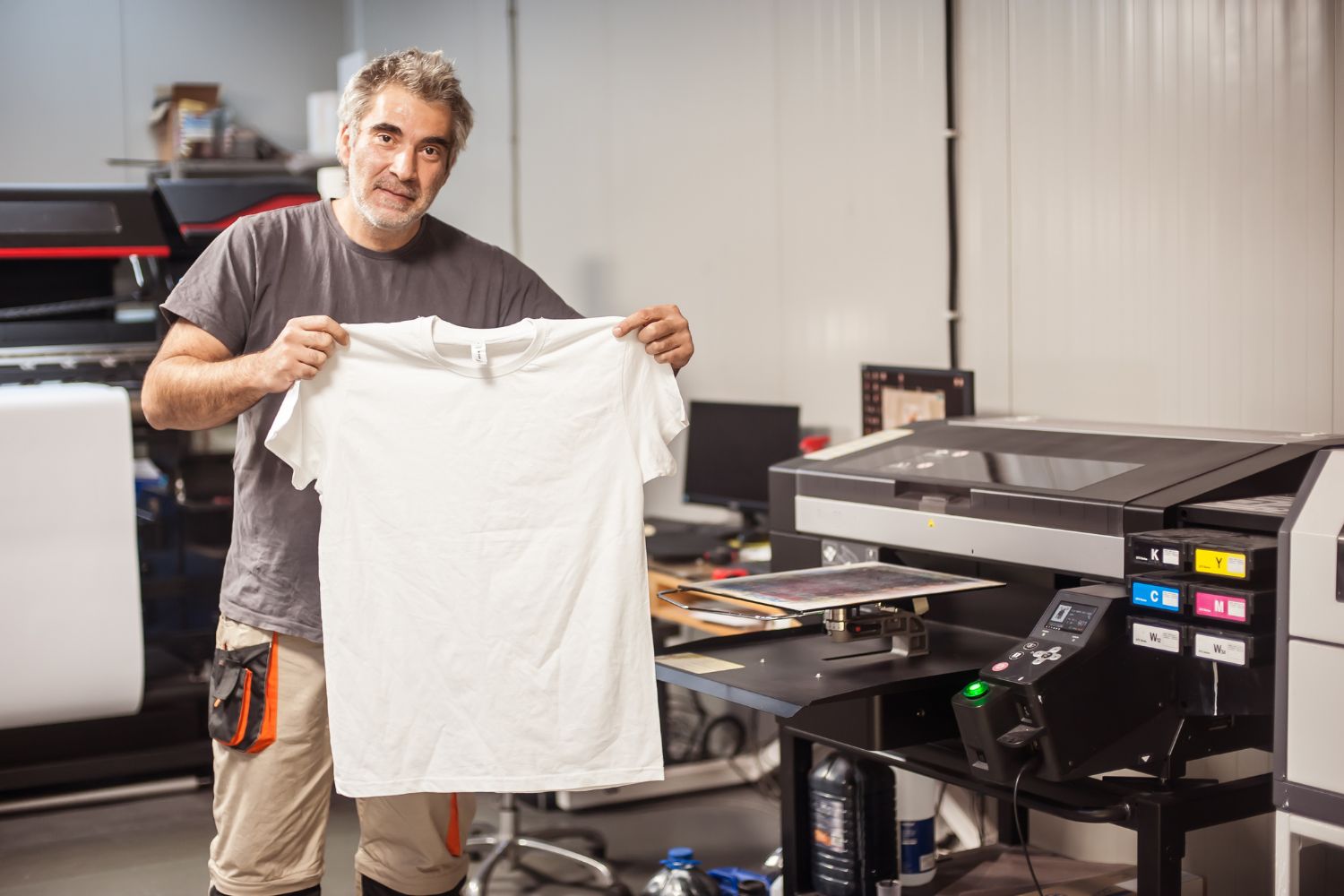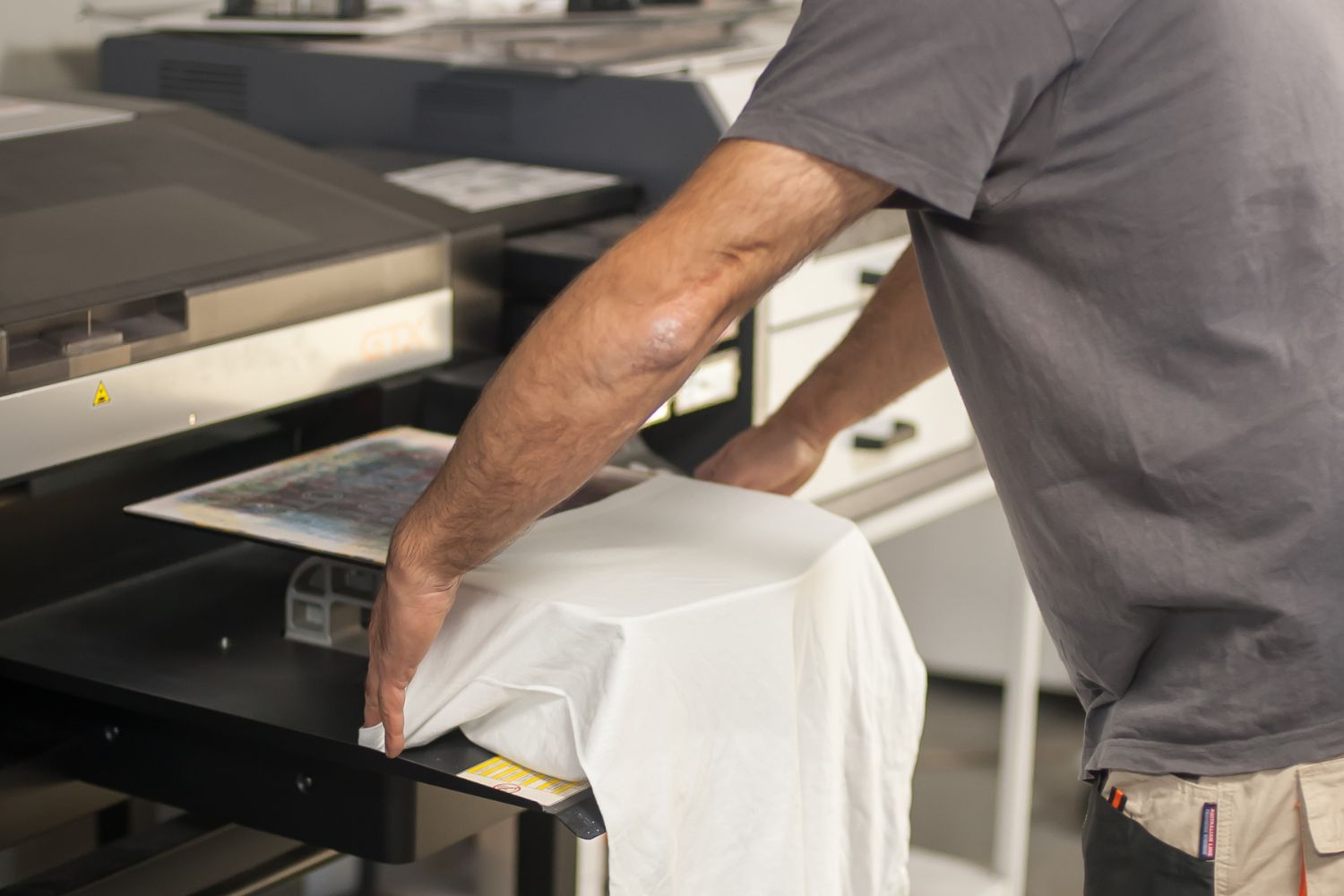Introduction
DTG (Direct to Garment) printing has established itself as an essential solution for textile customization. Thanks to its flexibility and exceptional print quality, this technique allows for the reproduction of detailed visuals with a wide range of colors, without any gradient limits. But to achieve professional results, the choice of textile for DTG printing is crucial.
Not all fabrics respond equally to DTG printing. Some absorb ink perfectly and offer optimal adhesion, while others can pose technical challenges, such as poor ink fixation or poor durability after washing. Choosing the wrong fabric for DTG printing can result in faded colors, a print that quickly fades, or an unpleasant feel.
So, what are the best fabrics for quality DTG printing? Which textiles should be avoided or treated before printing? In this article, we'll take a detailed look at the most suitable materials for optimal results, mistakes to avoid, and techniques for improving ink adhesion on more complex textiles.
👉 Get crisp, long-lasting prints with our collection of DTG supplies !
Cotton: the ideal textile for perfect DTG printing
Why is cotton the fabric of choice for DTG printing?
100% cotton is the most suitable fabric for DTG printing. It absorbs ink well, offers good pigment adhesion, and guarantees a crisp, vibrant finish. Combed ringspun cotton , in particular, is often recommended for its softer fiber and better ink absorption. As you'll see, the 80% cotton / 20% polyester blend is also very suitable.
👉 Optimize your cotton prints with our high quality DTG ink .
The Limits of Cotton and How to Overcome Them
Cotton can present some challenges, including a slight tendency to absorb too much ink, which can impair color clarity. To avoid this, it is crucial to properly adjust the pretreatment and maintain the correct pressing temperature.
Examples of successful applications on cotton
Many streetwear and merchandising brands use cotton for DTG printing. For example, concert T-shirts and custom corporate apparel are often made on 180 gsm organic cotton to combine quality and sustainability.
👉 Boost the quality of your cotton prints with our DTG pre-treatment solution .
Cotton/polyester blends: a compromise to master
Advantages and disadvantages of mixed textiles
Cotton-polyester blend fabrics are increasingly used in textile printing. Their main advantage is that they combine the softness and absorbency of cotton with the strength and flexibility of polyester. However, DTG ink has a harder time adhering to polyester , which can affect the sharpness of the printed image.
👉 Improve your mixed textile prints with our high adhesion DTG ink .
Techniques for successful DTG printing on cotton/polyester
- Use a specific pretreatment that improves the fixation of the ink on synthetic fibers.
- Set the pressing temperature slightly lower than for pure cotton to avoid overheating the polyester.
- Test on different percentages of cotton/polyester (for example, an 80/20 cotton/polyester is easier to print than a 50/50).
Application example: printing on sweatshirts and hoodies
Sweatshirts and hoodies made of 80% cotton and 20% polyester are very popular in promotional textiles and streetwear. Proper DTG printing on these materials allows for high-quality products with optimal fit.
👉 Try our DTG solutions for mixed fabrics for professional results.
Polyester: a more complex textile for DTG printing
Why is polyester difficult to print in DTG?
100% polyester is a fabric that repels the water-based inks used in DTG printing. This results in a less crisp visual result and a print that fades after a few washes. For printing on polyester, DTF is recommended.
Special and technical textiles: what challenges for DTG printing?
DTG printing on thick fabrics and sweatshirts
Thick fabrics, such as fleece sweatshirts , require more ink for good color saturation. It is recommended to slightly increase the print density and double-pass white ink on dark fabrics.
👉 Ensure crisp printing on thick fabrics with our high opacity DTG ink .
Can you DTG print on nylon or water-repellent fabrics?
Nylon and waterproof fabrics are generally not suitable for DTG printing because they do not absorb the ink. For these materials, it is better to opt for alternative solutions such as DTF or sublimation.
Tips for optimizing printing on difficult fabrics
- Always test print on a sample before starting mass production.
- Adjust the pressing time and temperature to avoid damaging the textile fiber.
Conclusion
Choosing the right textile for DTG printing is a key factor in achieving crisp, durable and professional prints.
- 100% cotton remains the benchmark for optimal ink absorption.
- Cotton/polyester blends are also a good compromise between comfort and durability (be careful with blends below 80% cotton)
- Technical textiles impose specific constraints , and it is sometimes preferable to opt for other printing techniques such as DTF.
By applying best practices and choosing the right inks, you can maximize the quality and profitability of your DTG prints.
👉 Discover our complete collection of DTG inks and supplies for an impeccable finish on all types of textiles!




Leave a comment
This site is protected by hCaptcha and the hCaptcha Privacy Policy and Terms of Service apply.